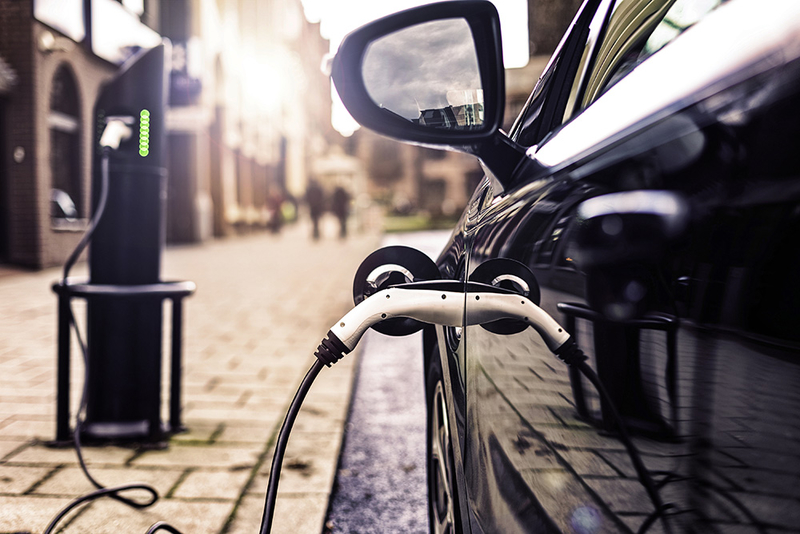The growing sales trend for hybrid and electric vehicles, despite the crisis currently affecting the automotive sector, due in part also to the Covid-19 pandemic, is an established fact. In the first six months of 2020, hybrid and electric cars were the only ones to score positive figures compared to the same period of the previous year. The impact of these vehicles on the market is still very limited (0.9%), but several analysts believe that, in the long run, volumes are bound to increase exponentially. The rising number of these vehicles will lead to changes not only linked to mobility and energy supply, but also in terms of workshop maintenance and assistance. In fact, electric units supply the kind of voltage that exposes maintenance and repair workers to higher professional risks compared to traditional vehicles. That is why we will need more in-depth skills and knowledge. To date, however, there are no specific safety standards for specialists working on electric and hybrid vehicles. It is therefore necessary to refer to those already issued for employees working on low voltage systems and, in particular, to the CEI 11-27 Standard, which applies to working on electrical systems, close to them or connected to them, providing the necessary requirements to guarantee safety and the essential elements for the training of workers. The standard can therefore be taken as a reference for training maintenance personnel working on electric or hybrid vehicles and in particular outlines three different qualifications obtained following specific training courses: Pes qualification, these are professional operators in possession of theoretical-technical knowledge and experience such as to allow them to analyse the risks deriving from electricity and carry out work in complete safety; Pav qualification, this is a professional figure who has knowledge of the risks involved in handling electric devices and is able to carry out work in full safety and Pei qualification, a professional operator who can carry out the work safely.
The procedure for de-energizing the system
• Turn off the ignition and remove the key
• Disconnect the battery safety connection
• Wait 10 minutes for the capacitors to discharge completely
• Wear insulating gloves and check with a voltmeter for the absence of voltage in the appropriate points and according to the vehicle manufacturer's instructions
• Do not open the battery pack, which is enclosed in a metal container and includes the connections between the individual cells, the sensors and the control unit
• Use tools with insulated handles and check the insulation of the cables and tips of the measuring instruments
• On electric and hybrid cars, the cables destined for the highest voltages are orange: never work on them without first securing the system by disconnecting the battery
• Depending on the car model, there may also be other auxiliary systems powered in addition to the motor and the generator
The operator with Pav qualification must have acquired:
• knowledge of accident prevention relating to specific types of electrical work
• ability to understand the instructions provided by a Pes for a specific type of work
• ability to organize and safely carry out specific work, after having received instructions from a Pes; ability to face the dangers and difficulties foreseen
• ability to recognize dangers originating from unforeseen events even if they may not be able to deal with them correctly independently
The legislation provides that for the attribution of the Pav qualification the worker needs:
• for work without tension a theoretical-practical training course of at least 10 hours, in compliance with level 1A of the CEI 11-27 standard while
• for de-energized and live work a theoretical-practical training course of at least 14 hours, in accordance with levels 1A and 2A of the CEI 11-27 standard
The operator with Pes qualification must have acquired:
• general knowledge of electrical accident prevention;
• in-depth knowledge of accident prevention issues for at least one specific type of work;
• ability to cope with independently organizing any type of work in full safety of;
• ability to identify and prevent electrical risks associated with work and implement appropriate measures to reduce or eliminate them;
• ability to deal with the unforeseen events that may occur during maintenance and repair procedures;
• ability to supervise and coordinate other workers;
• ability to properly inform and instruct a Pav worker to perform any work in full safety.
To obtain a Pes qualification, the regulation provides for a theoretical-practical training course of at least 14 hours, in accordance with levels 1A + 2A of CEI 11-27.
Pei qualification for electrical work under voltage
The Pei qualification identifies workers suitable to perform electrical work with a voltage of up to 1000 Volt in alternating current and 1500 V in direct current. The Pei is therefore a Pes or a Pav employee that is also authorized to perform specific electrical work with a voltage of up to 1000 Volt in alternating current or 1500 Volt in direct current in compliance with Cei 11-27 (insulating gloves, arc-resistant clothing).





